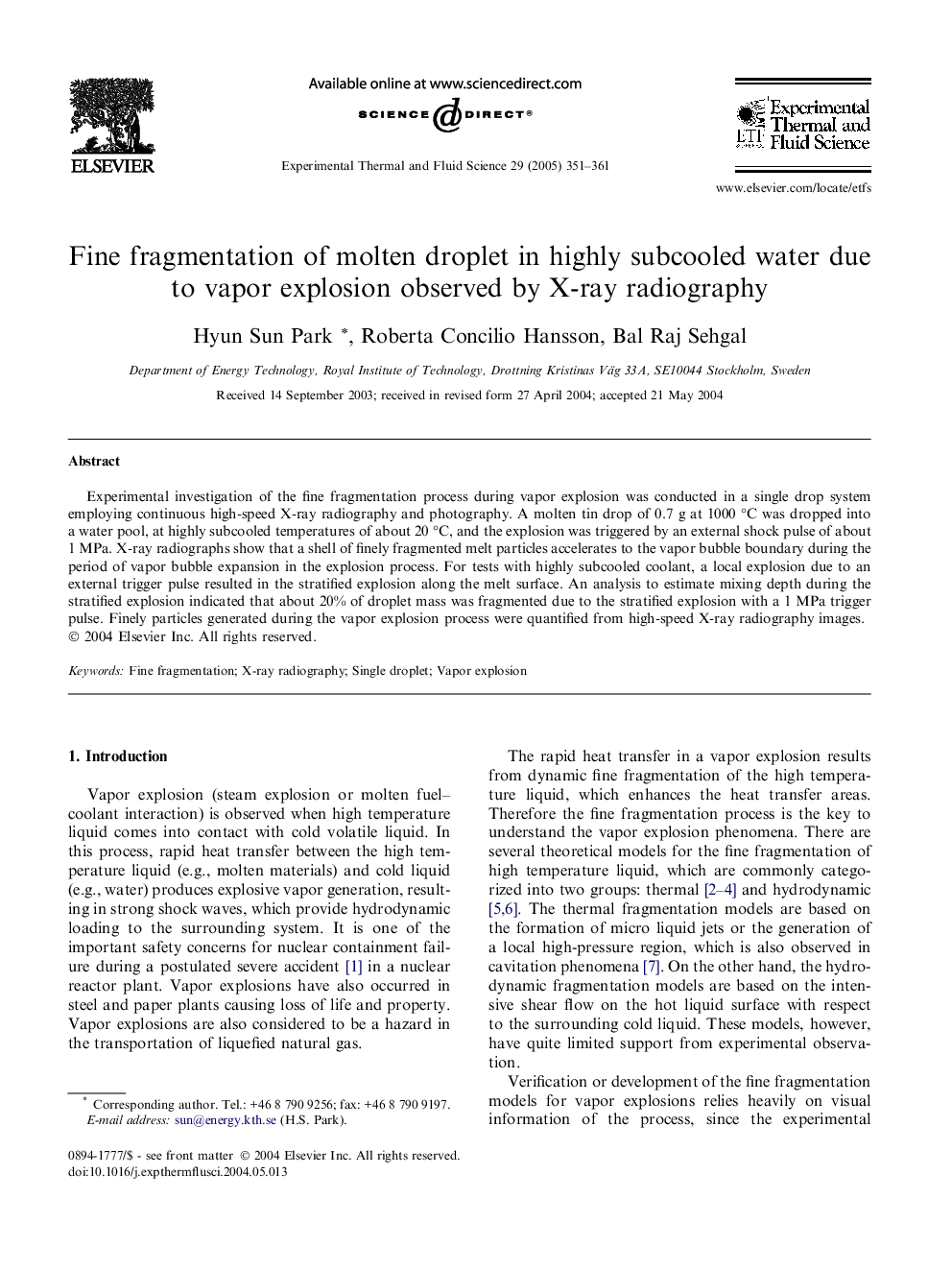| Article ID | Journal | Published Year | Pages | File Type |
|---|---|---|---|---|
| 10391854 | Experimental Thermal and Fluid Science | 2005 | 11 Pages |
Abstract
Experimental investigation of the fine fragmentation process during vapor explosion was conducted in a single drop system employing continuous high-speed X-ray radiography and photography. A molten tin drop of 0.7 g at 1000 °C was dropped into a water pool, at highly subcooled temperatures of about 20 °C, and the explosion was triggered by an external shock pulse of about 1 MPa. X-ray radiographs show that a shell of finely fragmented melt particles accelerates to the vapor bubble boundary during the period of vapor bubble expansion in the explosion process. For tests with highly subcooled coolant, a local explosion due to an external trigger pulse resulted in the stratified explosion along the melt surface. An analysis to estimate mixing depth during the stratified explosion indicated that about 20% of droplet mass was fragmented due to the stratified explosion with a 1 MPa trigger pulse. Finely particles generated during the vapor explosion process were quantified from high-speed X-ray radiography images.
Related Topics
Physical Sciences and Engineering
Chemical Engineering
Fluid Flow and Transfer Processes
Authors
Hyun Sun Park, Roberta Concilio Hansson, Bal Raj Sehgal,
